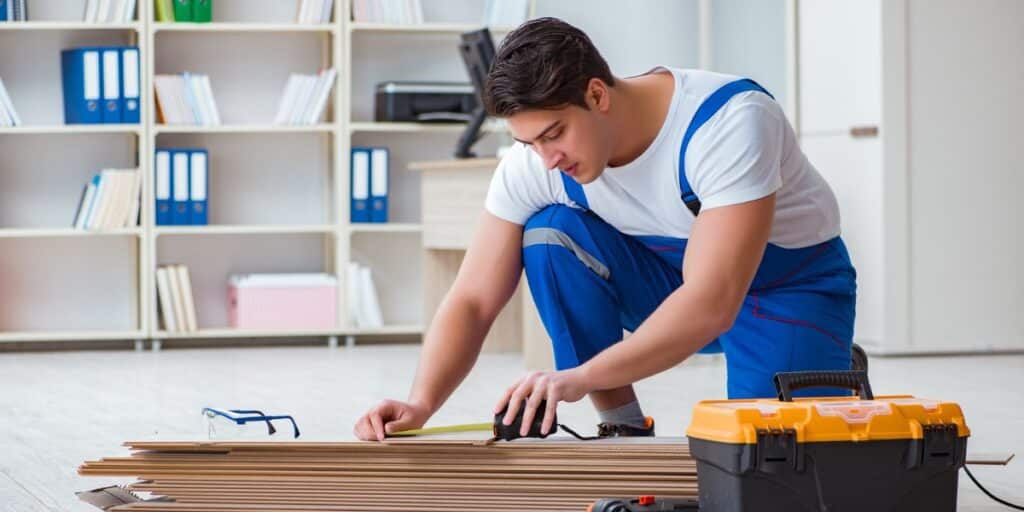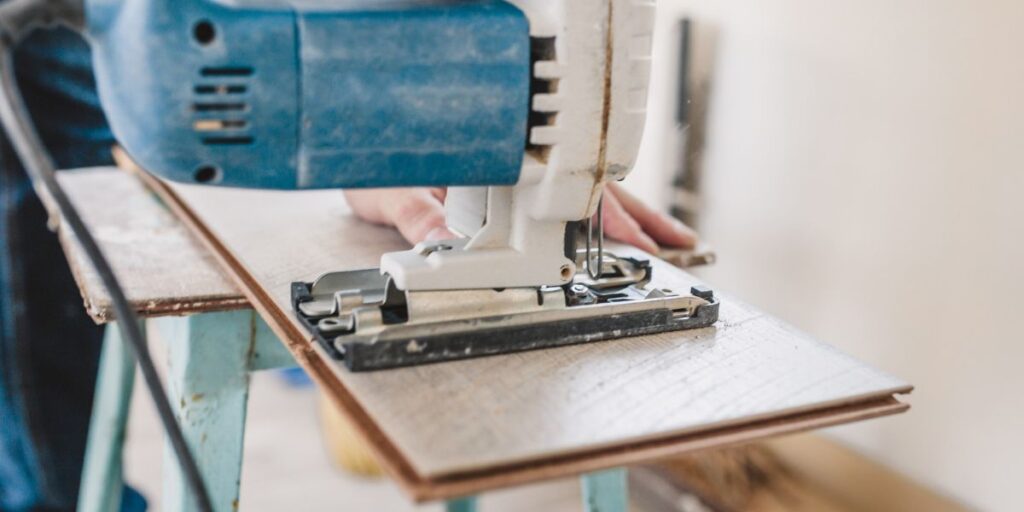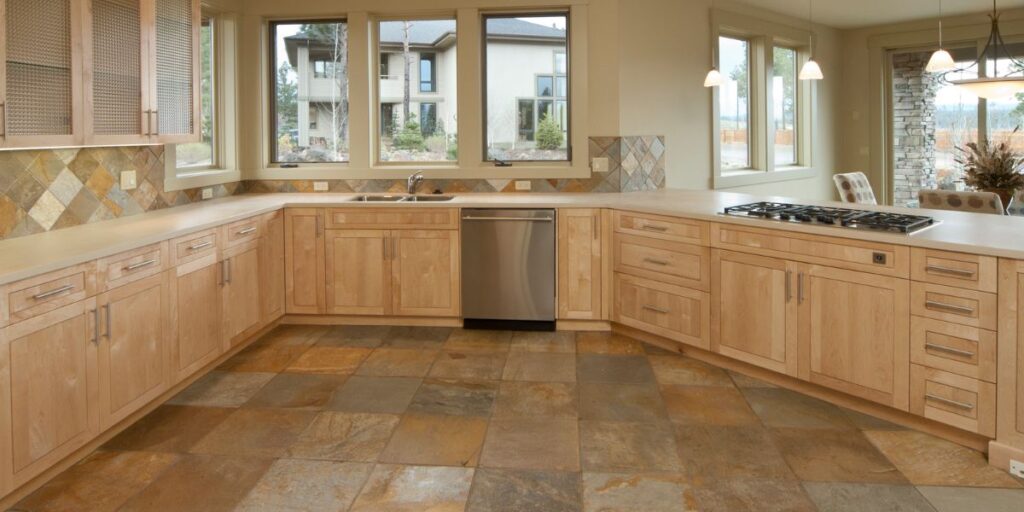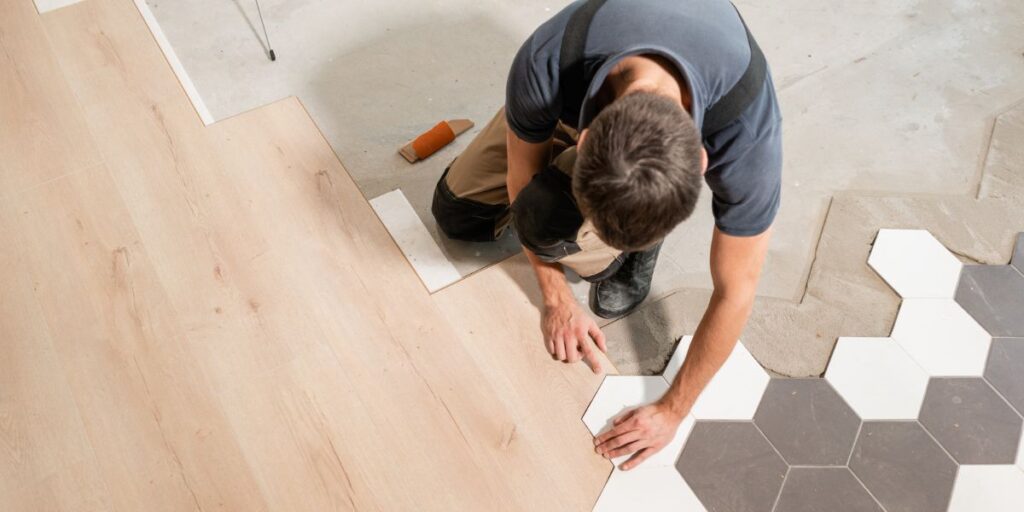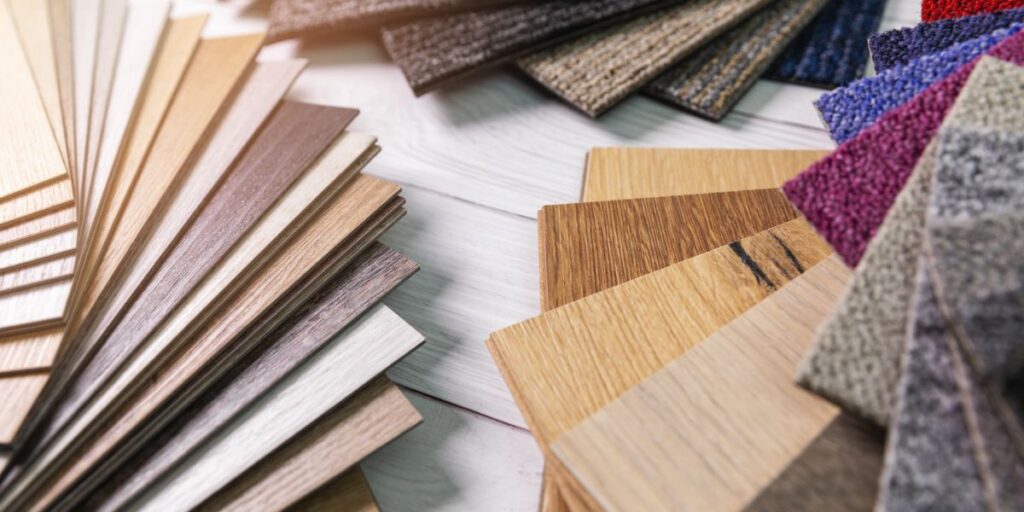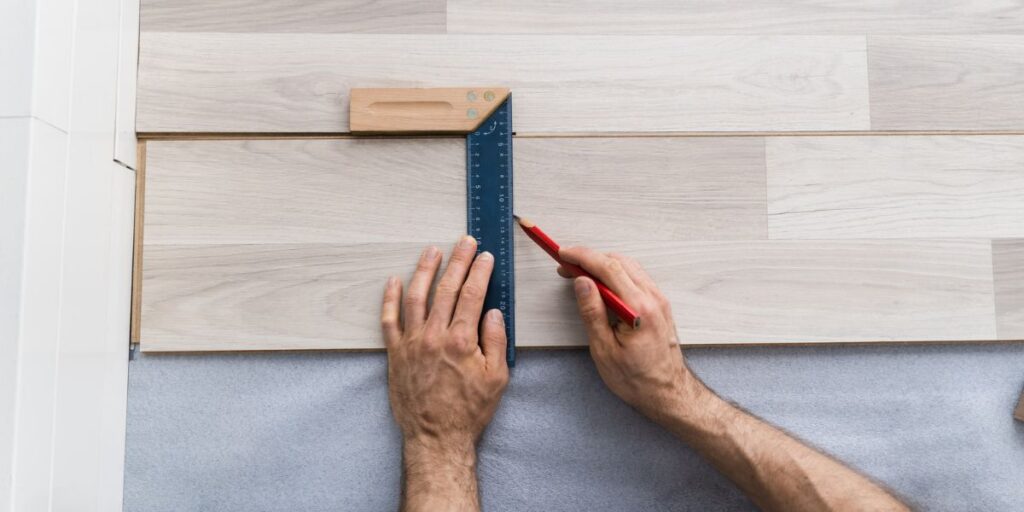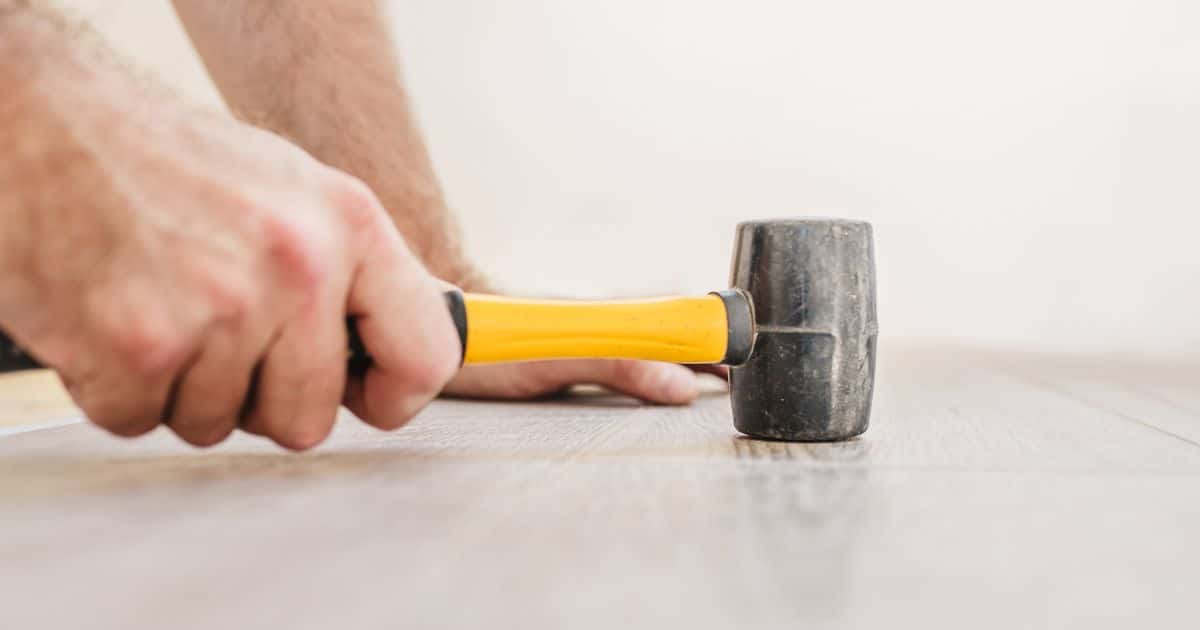
Laminate flooring is a popular choice for homeowners because of its affordability and easy maintenance. However, one major downfall of laminate flooring is its susceptibility to water damage.
Without proper waterproofing, laminate floors can quickly become warped, stained, and unattractive. That’s why it’s crucial to take steps to waterproof your laminate flooring – and I’m not just saying that as an expert writer but also as a homeowner who has learned this the hard way.
Let me tell you something – dealing with water damage on a laminate floor is a pain in the neck. It takes time, money, and effort to repair or replace damaged flooring – not to mention the inconvenience of not being able to use your room until the repairs are complete.
And don’t even get me started on the frustration of trying to clean up spilled liquids on an un-waterproofed floor! Trust me when I say that it’s always better to be safe than sorry when it comes to protecting your flooring from water damage.
But don’t worry – waterproofing your laminate flooring isn’t as daunting as it may seem. All you need are some basic materials and a little bit of elbow grease.
In this article, I’ll walk you through all the steps you need to take in order to effectively waterproof your laminate floors once and for all. Whether you’re dealing with an existing issue or just looking for preventative measures, consider this guide your go-to resource for everything related to waterproofing your beloved laminate floors.
RELATED: Unsticking the Sticky Situation: An Expert Guide to Removing Glued Down Laminate Flooring
How to Waterproof Laminate Flooring?
The Room Must Be Cleared Out
Before you start waterproofing your laminate flooring, it is essential to clear out the room entirely. The process of waterproofing requires a lot of space and can be quite messy, so it’s crucial to remove any furniture, rugs, or other items from the room.
This includes curtains and blinds as well. You don’t want anything getting in the way of your work or getting damaged by water or sealant.
Clean and Dry Your Floor
Once you’ve cleared out the area, it’s time to clean and dry your floor thoroughly. Any dirt or debris left on the floor can interfere with effective sealing.
Use a vacuum cleaner to remove any dirt and dust from the surface of your floor. Next, use a mop or cloth dampened with warm water to clean and wipe off any stains.
After cleaning your floor correctly, allow it to dry completely before moving on to the next step. Any moisture left on the surface could lead to issues with sealing later on.
Check for Any Damages or Cracks
Before applying any sealants on your floorboards, it’s essential first to check for any damages or cracks that need repairing. Look around carefully for areas where water may have seeped through earlier; these are usually visible as dark spots along cracks in between flooring boards.
If you find any cracks or damages along with the edges or seams of your laminate flooring, they should be fixed before waterproofing takes place; otherwise, even after sealing, water can still penetrate through these gaps. Preparing an area before waterproofing laminate flooring is an essential step that should not be overlooked if one wants efficient results.
Clearing out space removes obstacles that may hinder progress, while cleaning ensures no dirt interferes with effective sealing. Checking for damages prevents further damage by fixing them beforehand.
Applying Waterproof Sealant
Choosing the Right Type of Sealant: Go for Quality Over Cheapness
Choosing the right sealant is crucial in waterproofing your laminate flooring. Don’t fall into the trap of buying a cheap, low-quality sealant just to save a few bucks. Trust me, I’ve been there, and it’s not worth it.
A low-quality sealant won’t last long and will eventually cause more damage than good. Instead, go for quality over cheapness.
Invest in a high-quality sealant that will last longer and provide better protection to your floors. Look for a sealant that is specifically designed for laminate flooring and has excellent waterproofing properties.
Applying Sealant to All Edges and Seams: Don’t Leave Any Gaps
When applying the sealant, make sure you cover all edges and seams thoroughly. Don’t leave any gaps or areas uncovered as they can become potential entry points for water. Take your time and be thorough when applying the sealant.
Use a brush or roller to apply an even coat of sealant on all edges and seams. Make sure you pay attention to corners as they are often overlooked but are critical areas that need to be sealed properly.
Using a Brush or Roller to Ensure Even Coverage: Take Your Time
Using a brush or roller is the best way to ensure even coverage when applying the sealant. Take your time when applying it, making sure you cover every inch of your laminate flooring without leaving any spots uncovered.
Don’t rush through this process, as it’s essential to ensure that every area is coated with an adequate amount of sealant. Apply enough pressure with your brush or roller so that the sealant penetrates deep into the laminate surface for maximum protection against water damage.
Choosing the right type of sealant, applying it to all edges and seams, and using a brush or roller to ensure even coverage are critical steps in waterproofing your laminate flooring. Don’t cut corners when it comes to protecting your floors from water damage.
Invest in a high-quality sealant and take your time when applying it. Your flooring will thank you for it in the long run.
Adding a Moisture Barrier
The Importance of a Moisture Barrier
Let me be clear, if you want to waterproof your laminate flooring, then adding a moisture barrier is absolutely essential. A moisture barrier is essentially a protective layer that prevents water from seeping through the plank seams and causing damage to your flooring.
The last thing you want is to be caught off guard by an unexpected spill or leak, ruining your beautiful floor in an instant. But let’s not forget about the long-term effects.
Without a proper moisture barrier, your laminate floors are susceptible to mold and mildew growth over time, as they will absorb any excess water like a sponge. This can lead not only to unsightly blemishes on your floor but also to potential health hazards for you and your family.
Laying Down a Plastic Sheet or Underlayment
When it comes to choosing the right type of moisture barrier for your laminate flooring, my advice is simple – opt for plastic sheeting or underlayment. Sure, some people might recommend using roofing felt or asphalt paper as alternatives, but why take any chances?
Investing in plastic sheeting or underlayment will give you peace of mind knowing that you have a reliable layer of protection against water damage. Now when it comes to laying down the moisture barrier, precision is key.
One small mistake could result in unwanted gaps that allow water to seep through and undermine all of your hard work. Take the necessary precautions by first measuring out the length and width of the room before cutting the plastic sheet into manageable pieces that can be easily fitted together later on.
Cutting and Fitting Properly
The final stage in adding a moisture barrier requires accuracy and attention to detail once again. As you lay down each piece of plastic sheeting or underlayment, ensure that each edge overlaps neatly with its neighbor.
Any gaps between pieces could lead to water seepage, and the whole point of adding a moisture barrier would be defeated. Cutting the plastic sheeting or underlayment to fit around corners, doors, and other tricky areas can be a hassle, but it’s crucial to ensure that every inch of your laminate flooring is protected.
My advice is to take your time during this process and use a utility knife or sharp scissors to cut the material precisely. Adding a moisture barrier is vital if you want to effectively waterproof your laminate flooring.
Opt for plastic sheeting or underlayment for the best results, and be sure to cut and fit each piece with precision. By doing so, you’ll enjoy long-lasting protection against water damage and preserve the beauty of your floors for years to come.
Testing for Effectiveness
What’s the point of waterproofing if it doesn’t work?
You might think that applying a sealant and moisture barrier is enough to protect your laminate flooring from water damage. But how do you really know if your efforts have paid off? That’s where testing for effectiveness comes in.
Before you assume that your waterproofing job is complete, conduct a few tests to ensure that water can’t seep through. The last thing you want is to find out too late that your flooring is still susceptible to water damage.
The Cup Test
One simple test you can do is the cup test. Fill a small cup with water and place it on top of the sealed laminate floor for at least 24 hours.
If there are no signs of moisture or water seepage around the cup, then congratulations, your sealant has worked effectively! However, if there are any signs of moisture or dampness around the cup area, then, unfortunately, you may need to apply another layer of sealant.
The Mop Test
Another method involves using a mop and wetting the floor all over after waterproofing it. Leave this state for at least 24 hours in order to see if any damage occurs to the flooring. If no damage occurs, then consider it successful.
The Soak Test
For those with more adventurous spirits, there’s always the soak test option! Fill up a bathtub with enough water so that when you place a piece of wood into it (similar size as your laminate flooring), it will be submerged completely underwater by at least an inch or two above its surface level. Leave this submerged piece of wood for at least 24 hours before taking it out and letting it dry under normal conditions – no heater or fan allowed!
Once dry, check carefully for any signs of moisture, discoloration, or warping. If there are no signs of any damage at all, then you’ve done a fantastic job with waterproofing your laminate flooring!
Maintaining Waterproofed Flooring
Tips on Maintaining Waterproofed Flooring
So you’ve gone through all the trouble of waterproofing your laminate flooring. Congratulations! But don’t think that your job is done yet.
Maintaining waterproofed flooring is just as important as waterproofing it in the first place. Here are some tips to help you keep your floors in top condition.
First and foremost, regular cleaning is key to maintaining the effectiveness of your waterproofing efforts. Sweeping up any debris and regularly mopping with a gentle cleaner will help remove any dirt or grime that could potentially wear away at the waterproof sealant over time.
Be sure to avoid using harsh chemical cleaners, as these can strip away the sealant and damage your floors. Another tip for maintaining your waterproofed flooring is to be mindful of spills and moisture buildup.
While you may have gone through all the trouble of sealing every edge and seam, this doesn’t mean that water can’t get underneath if left sitting for too long. So be sure to clean up any spills promptly and avoid standing water whenever possible.
Consider placing area rugs or mats in high-traffic areas or areas where water is likely to accumulate (such as near entrances or sinks). This will help protect against wear and tear on the sealant while also providing an extra barrier against moisture buildup.
RELATED: Installing Vinyl Plank Flooring: The Importance of Proper Installation
Explaining How Regular Cleaning Can Help Maintain Its Effectiveness
Regular cleaning may seem like a no-brainer when it comes to maintaining waterproofed flooring, but it’s worth emphasizing just how important it really is. Over time, even small particles of dirt can wear down a sealed surface, compromising its ability to repel water.
By sweeping up debris with a soft-bristled broom or vacuuming with a hardwood floor attachment regularly, you’ll remove particles that might otherwise cause abrasive damage over time. Mopping with a gentle cleaner will also help clean away any dirt or grime that could wear away at the sealant.
It’s important to note, however, that the type of cleaner you use can make a big difference in maintaining your waterproofed flooring. Avoid using harsh chemical cleaners, as these can strip away the sealant and damage your floors.
Instead, opt for cleaners specifically designed for laminate flooring or natural alternatives like vinegar and water. Remember: prevention is key when it comes to maintaining waterproofed flooring.
By taking care to clean up spills promptly and avoiding standing water whenever possible, you’ll be doing your part to protect your floors from moisture damage. And by placing area rugs or mats in high-traffic areas or areas where water is likely to accumulate, you’ll provide an extra layer of protection against wear and tear on the sealant.
Frequently Asked Questions
Can you make the laminate floor waterproof?
While laminate flooring is not inherently waterproof, you can make it more water-resistant by applying a waterproof laminate flooring sealant or using waterproof laminate flooring products. However, it’s important to note that these measures do not make laminate flooring completely impervious to water damage.
Is there a waterproof sealer for laminate flooring?
Yes, there are waterproof sealers specifically designed for laminate flooring. These sealers create a protective barrier on the surface of the laminate, helping to prevent water penetration and damage. However, it’s crucial to follow the manufacturer’s instructions and reapply the sealer periodically to maintain its effectiveness.
Can you put a sealant on laminate flooring?
It is generally not recommended to put a sealant on laminate flooring, as laminate already has a protective wear layer. Adding a sealant can interfere with the flooring’s appearance and durability, and it may not provide adequate protection against water damage.
Does water ruin laminate?
Water can cause damage to laminate flooring if it penetrates the seams or edges, leading to warping, swelling, or separation of the planks. Prolonged exposure to water or excessive moisture can result in irreversible damage to the laminate.
What happens to laminate when it gets wet?
When laminate flooring gets wet, it can absorb moisture, causing the planks to swell, warp, or buckle. The core layer of the laminate, typically made of fiberboard, is particularly susceptible to water damage. Promptly addressing water spills or moisture issues is crucial to minimize the potential damage.
How do you waterproof flooring?
To waterproof flooring, you can choose materials that are inherently water-resistant or opt for waterproofing measures such as using waterproof underlayment or applying a waterproof sealant. It’s important to select flooring products that are specifically designed for wet or high-moisture areas and to follow proper installation and maintenance guidelines to ensure effective waterproofing.
Conclusion
The Importance of Waterproofing Laminate Flooring
It cannot be emphasized enough how important it is to waterproof your laminate flooring. Water damage can cause major problems to your floors, and if you don’t take the necessary precautions, you may end up spending a fortune in repairs and replacements.
Not only that, but water damage can also lead to mold and mildew growth, which can be dangerous for your health. By waterproofing your laminate flooring, you are taking an active stance in protecting your investment.
You are ensuring that it will last longer and look better for years to come. And let’s face it, who doesn’t want their floors to look amazing?
Take Action in Protecting Your Floors from Water Damage
Now that you know the importance of waterproofing your laminate flooring, it’s time to take action. Don’t wait until it’s too late.
Follow the steps outlined in this article and start protecting your floors from water damage today. Remember that prevention is always better than cure.
Don’t wait for a leak or flood to occur before taking action. Be proactive in protecting your floorings from water damage and save yourself a lot of trouble down the line.
Looking Ahead
In the end, waterproofing laminate flooring is not rocket science. It just takes some effort on your part. With proper preparation and careful application of sealant and moisture barrier, you can ensure a strong defense against water damage.
So go ahead and invest time in waterproofing your laminate flooring today! By doing so, you’re making an investment that will pay off big time in terms of both cost savings and peace of mind down the road!
RESOURCE: National Tile Contractors Association: Education and Certification

